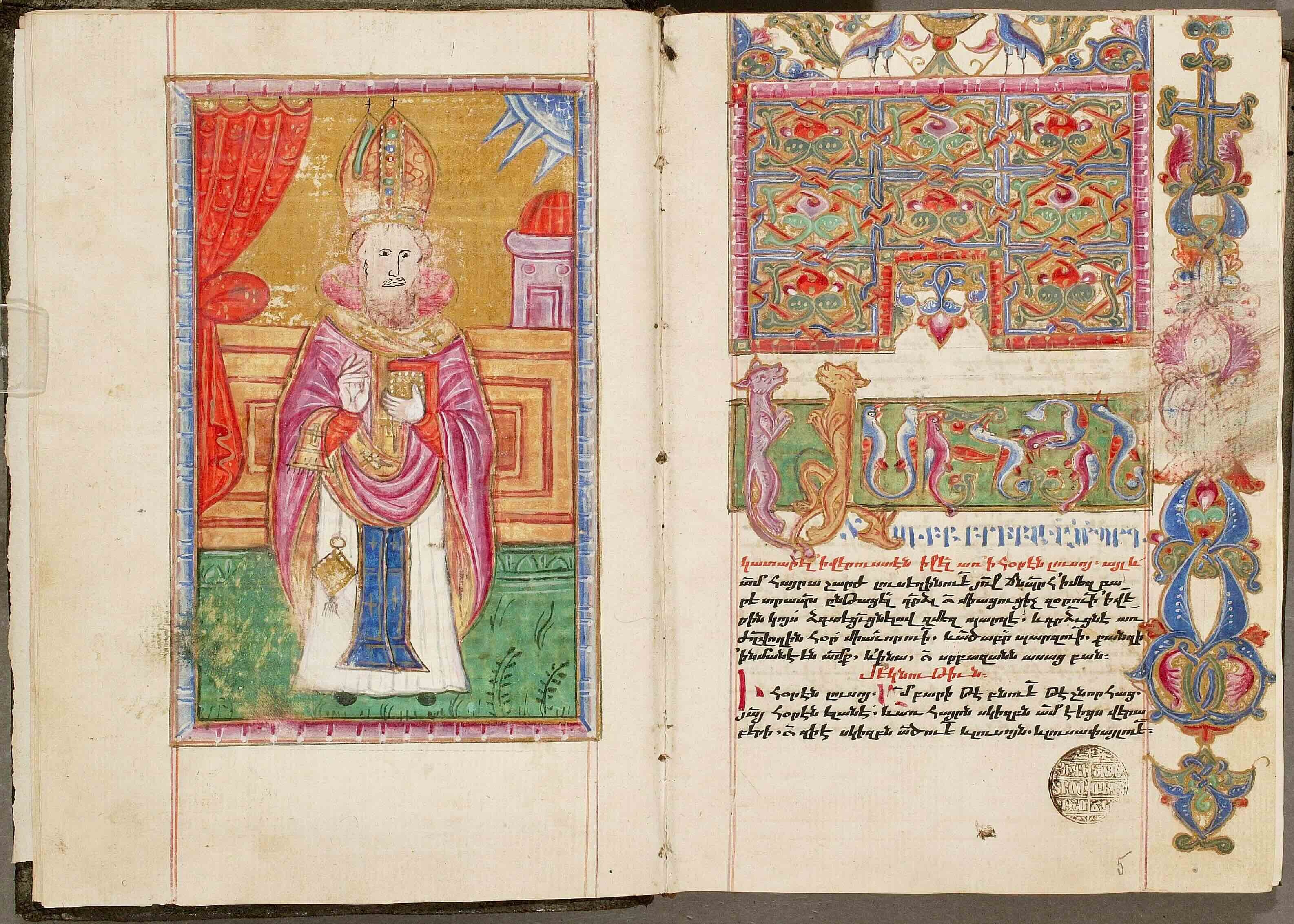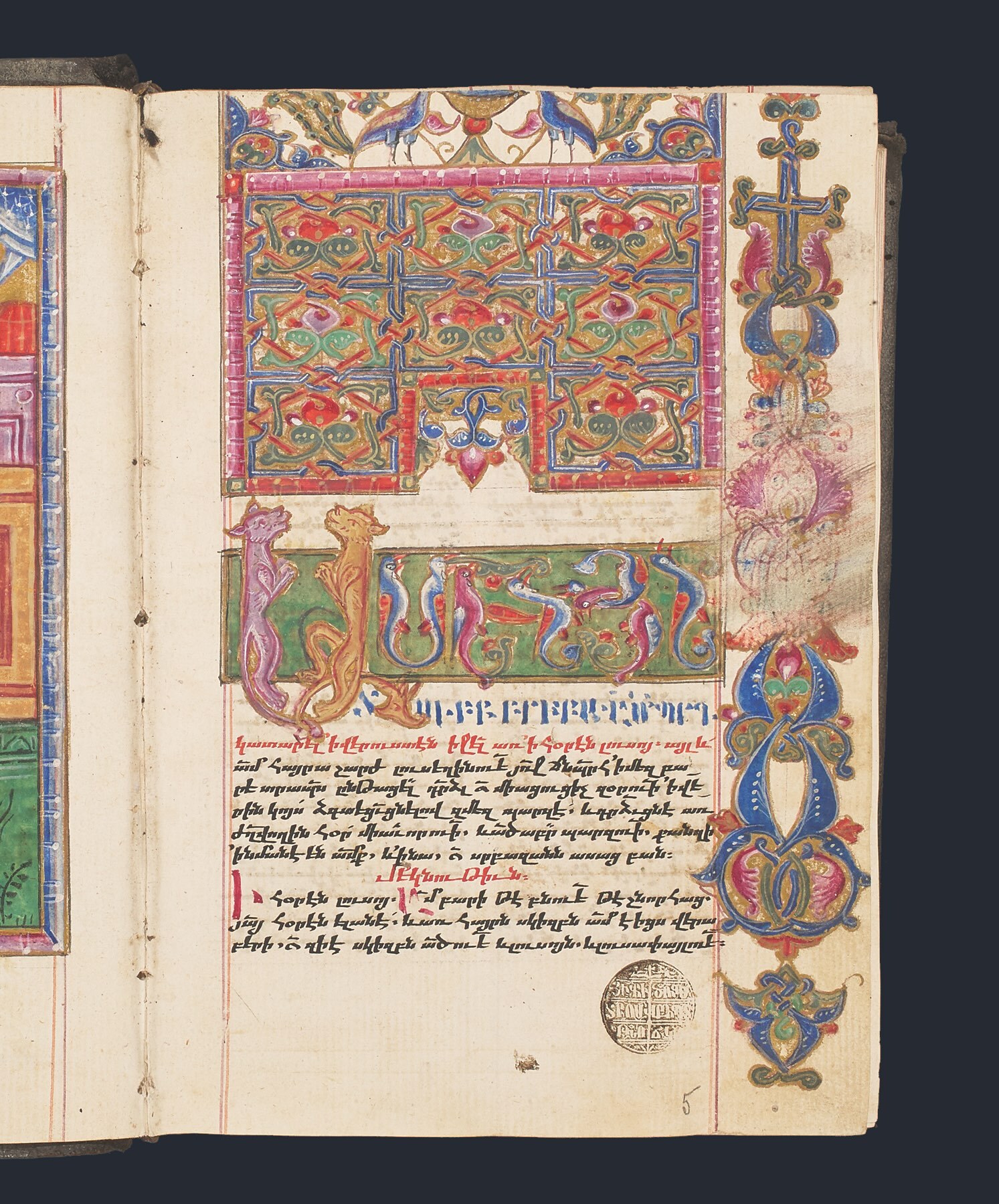Postscript — Layers Of Translation And Illumination In An Armenian Manuscript
Postscript — Layers of Translation and Illumination in an Armenian Manuscript

In the New Testament, Acts of the Apostles (17:34), Luke describes the “marketplace of ideas” in Athens and places the Apostle Paul at the Areopagus hilltop, giving an account of the Christian God. From the crowd that gathered, a number of people went on to follow Paul’s teachings. Acts names two individuals specifically: Dionysius the Areopagite, who later became the bishop of Athens, and a woman named Damaris.
A collection of texts was attributed to Dionysius the Areopagite, who was active in the first century. Scholars later challenged the attribution of the writings, placing their authorship in the 5th–6th centuries and calling their author “Pseudo-Dionysius.” Nevertheless, this body of work has carried significant weight in Christian literature.
In the Armenian tradition, Step‘anos Siwnets‘i (685–735), bishop of Siwnik‘, made the first translation of the Dionysian texts from Greek into Classical Armenian. Nearly a millennium later, Step‘anos Lehats‘i (or Step‘anos of Poland, d. 1689), translated a Latin copy of the texts into Armenian. It is the Lehats‘i translation that we find in manuscript BZAN 000438, copied by a priest named Ghazar Jughayets‘i (Lazarus of Jugha) in 1711 and now in the collection of Our Lady of Bzummār Convent in Lebanon.
The first page contains the opening of Heavenly Hierarchy (one of four Pseudo-Dionysian texts). One can see the layers of translation—Armenian from Latin from Greek, now translated here into English:
“From the Father of Lights. Every good thing whether of nature or grace proceeds forth from God the Father. And, to the Father the origin of all things that exist is related to, [directed] upward to him. As he is the origin of divinity and light, he is also the origin of radiance.”
Above the text, the illuminated word “ԱՄԵՆԱՅՆ,” meaning every/all, is written in t‘ṛch‘nagir script—zoomorphic letters, meant to animate and give life and breath to each letter, word, phrase on the page. The line that follows, in light blue, is in erkat‘agir script (iron script). The lines in red and black are in bologir script, with rounded, full letters. Later in the manuscript, the scribe utilizes nōtrgir, a script used for notary and official documents.

At the top of the page, a headpiece called a kisakhoran (half-altar) serves as an altar to incorporate the incarnational nature of the written words. A collage of colors, it recalls the Garden of Eden and Paradise, depicting two peacocks with a fountain of water; fruits and flowers; and, to the right of the kisakhoran, an Armenian cross with flourishing vegetative edges on all four points, resembling the four corners of the Earth.
The author of these texts employed imagery and symbols to awaken the human imagination and to bridge the material and spiritual worlds. The manuscript followed suit, transporting the reader to new realms.
A version of this story originally appeared in the Summer 2024 issue of HMML Magazine.




